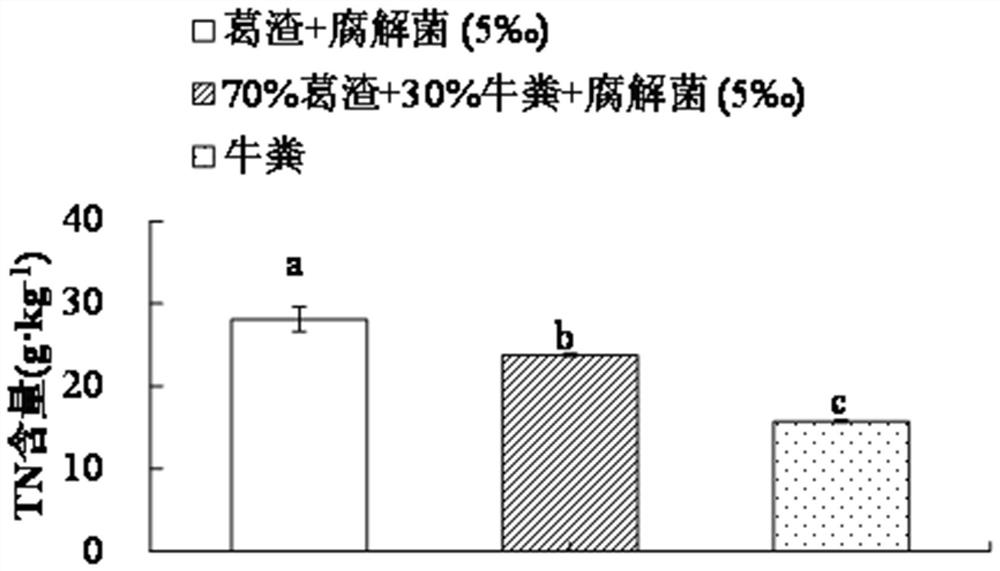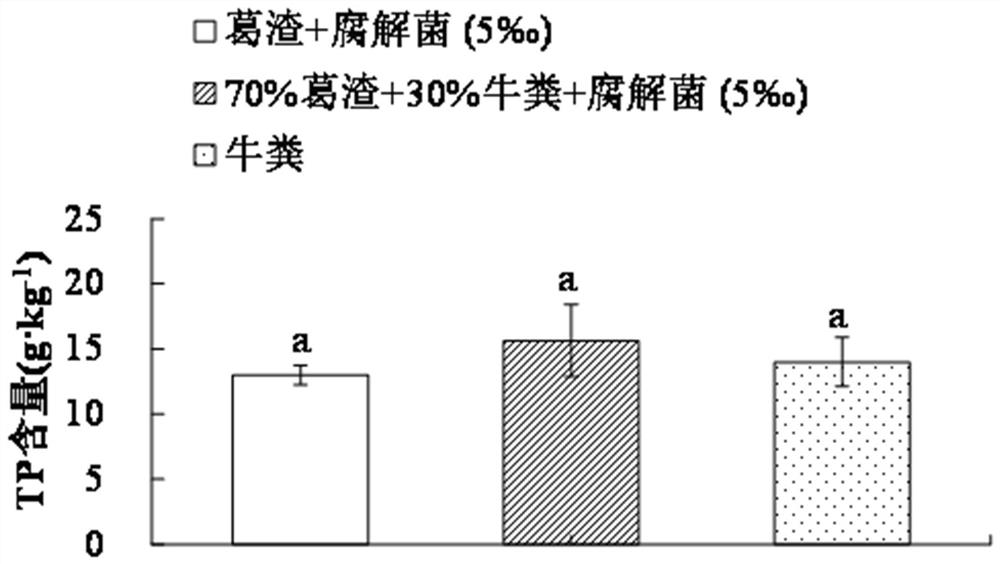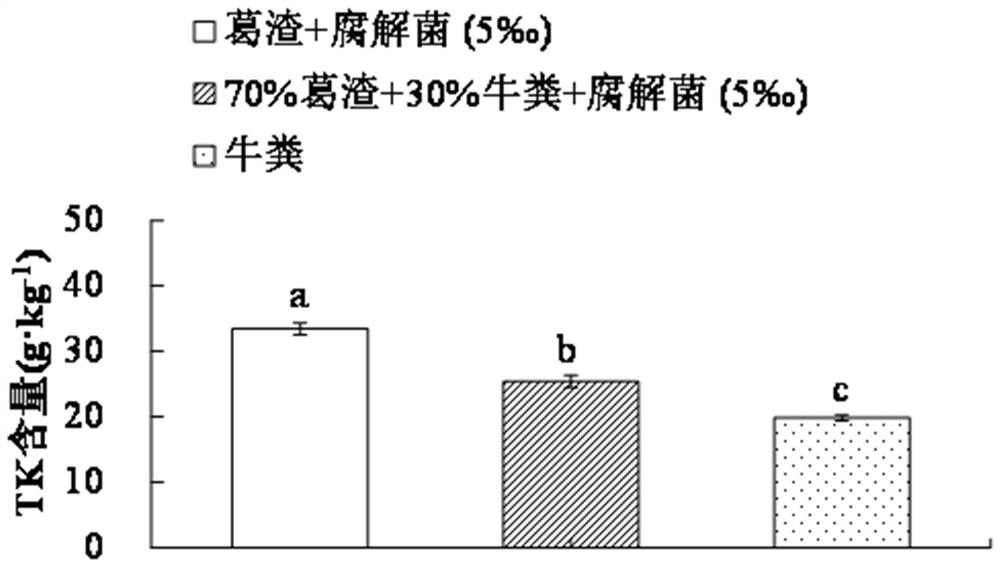Method for preparing organic fertilizer by treating arrowroot residues with earthworms
An organic fertilizer and organic fertilizer technology, applied in the field of agricultural biology, can solve the problems of polluting the environment, wasting resources, and low degree of deep processing of kudzu, and achieve the effects of improving recycling rate, eliminating waste of resources, and efficient transformation and utilization
- Summary
- Abstract
- Description
- Claims
- Application Information
AI Technical Summary
Problems solved by technology
Method used
Image
Examples
Embodiment 1
[0034] S1: Take fresh Pueraria slag, inoculate it with a decomposing agent at a mass ratio of 4‰, adjust the moisture content to 65%, and compost and ferment for 25 days.
[0035] S2: Place vermicomposts in the material fermented in step S1, with a stocking density of 12 worms per gram of dry material, and re-stock every 20 days. The material temperature is set at 20°C to ensure the normal reproduction of earthworms. Finally, the earthworms are separated from the vermicompost to obtain the earthworm products and the vermicompost organic fertilizer. The organic matter content of vermicompost organic fertilizer is 30.2%; the total nutrient content of nitrogen, phosphorus and potassium (7.5%) is significantly higher than that of cow dung source vermicompost (4.96%), such as Figure 1-4 shown.
[0036] S3: The vermicompost separated in step S2 and water were prepared according to the material-to-liquid ratio of 1:10 (g / L) to obtain the vermicompost extract, and the vermicompost ...
Embodiment 2
[0039] S1: Take fresh Pueraria dregs and cow dung, mix them evenly according to the air-dry weight ratio of 7:3, then inoculate the mixture with a 4.5‰ mass ratio of decomposing bacteria, adjust the moisture content to 70%, and compost and ferment for 4 days.
[0040] S2: Place vermicomposts in the material fermented in step S1. The stocking density is 10 worms per gram of dry material, re-stocking once every 20 days, and the temperature of the materials is set at 25°C. Finally, the earthworms are separated from the vermicompost to obtain the earthworm products and the vermicompost organic fertilizer. The organic matter content of vermicompost organic fertilizer is 26.1%, and the total nutrient content of nitrogen, phosphorus and potassium is 6.48%, such as Figure 1-4 shown.
[0041] S3: The vermicompost and water separated in step S2 were used to obtain the vermicompost extraction liquid according to the material-to-liquid ratio of 1.5:10 (g / L), and the vermicompost extractio...
Embodiment 3
[0043] S1: Take fresh kudzu slag, inoculate the decomposing bacteria at a mass ratio of 6‰, adjust the moisture content to 60%, and compost and ferment for 20 days.
[0044] S2: Place vermicomposts in the material fermented in step S1. The stocking density is 15 worms per gram of dry material, re-stocking once every 20 days, and the material temperature is set at 20°C. Finally, the earthworms are separated from the vermicompost to obtain the earthworm products and the vermicompost organic fertilizer.
[0045] S3: The vermicompost and water separated in step S2 were used to obtain the vermicompost extraction liquid according to the material-to-liquid ratio of 1:12 (g / L), and the vermicompost extraction liquid was applied to the experiment of indoor rapeseed germination. Its effect on seed germination was observed indoors, and the germination rate was 82%.
PUM
 Login to View More
Login to View More Abstract
Description
Claims
Application Information
 Login to View More
Login to View More - R&D
- Intellectual Property
- Life Sciences
- Materials
- Tech Scout
- Unparalleled Data Quality
- Higher Quality Content
- 60% Fewer Hallucinations
Browse by: Latest US Patents, China's latest patents, Technical Efficacy Thesaurus, Application Domain, Technology Topic, Popular Technical Reports.
© 2025 PatSnap. All rights reserved.Legal|Privacy policy|Modern Slavery Act Transparency Statement|Sitemap|About US| Contact US: help@patsnap.com



